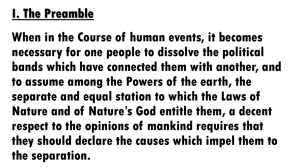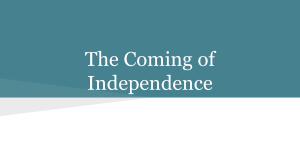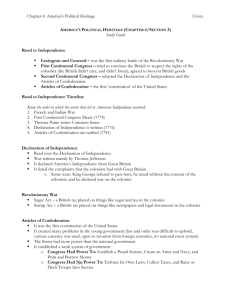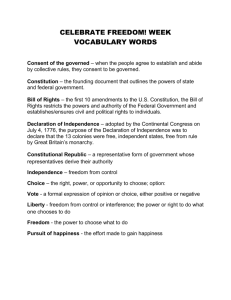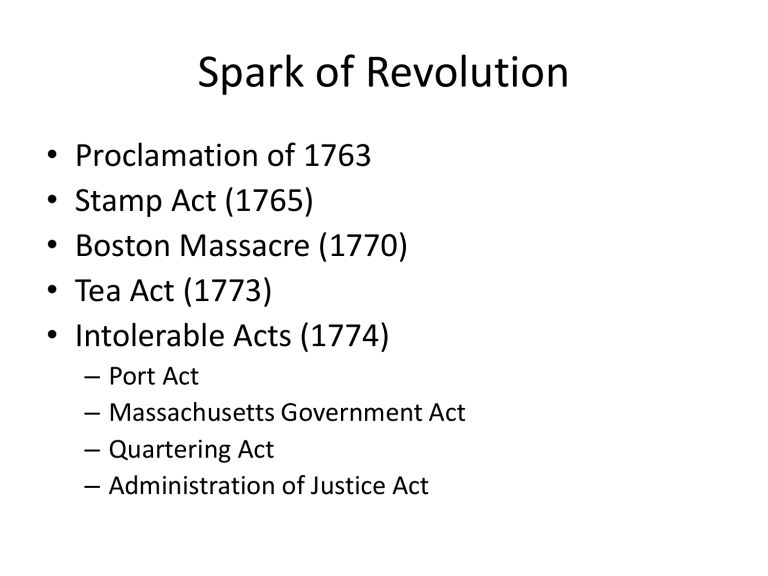
Spark of Revolution • • • • • Proclamation of 1763 Stamp Act (1765) Boston Massacre (1770) Tea Act (1773) Intolerable Acts (1774) – – – – Port Act Massachusetts Government Act Quartering Act Administration of Justice Act Continental Congress • 1st Continental Congress 1774 – Boycott English Goods • 2nd Continental Congress 1775 – Convene after the events at Lexington and Concord – Olive Branch Petition • July 2nd 1776, Declaration of Independence The Declaration of Independence • Set up as a syllogism – Broken up into three parts – 2 premises and a conclusion • 1. Each person has a natural right to life liberty and property. Government is created by the consent of the governed to protect these rights. • 2. Our Current Government does not do this. THEREFORE • 3. We have a right and a duty to rebel against it The Declaration of Independence • “…Laws of Nature and of Nature’s God…” • “…We hold these truth to be Self-Evident…” – What does it mean for something to be selfevident? • “…That all men are created equal…” – How so? Quantitative vs. Qualitative The Declaration of Independence • “…That they are endowed by their creator with certain unalienable Rights, that among these are Life, Liberty, and the Pursuit of Happiness…” – Where do these come from? – Must look to the Political Philosophy of John Locke – 2nd Treatise on Government (1689) Locke’s 2nd Treatise • Imagine man in a “State of nature” – Alone, defenseless, armed only with his wits and brute strength • Does this person still have rights? How can we tell? • Self preservation, freedom, and property • Why property? Labor + natural resource = property The Declaration of Independence • “That to secure these rights, Governments are instituted among Men, deriving their just powers from the consent of the governed…” – How radical a statement is this? • “That whenever any form of government becomes destructive to these ends it is the Right of the People to alter or abolish it…” – Why do they have this right? The Articles of Confederation • Lasted 10 years 1777-1787 (1789) • "Each state retains its sovereignty, freedom, and independence, and every power, jurisdiction, and right, which is not by this Confederation expressly delegated." • Central national government is incredibly weak. – Cannot levy taxes or print money – Cannot raise an army – Need Unanimous vote of all 13 states to pass bills U.S. Constitution • Preamble • Articles • Amendments The Preamble • “A More Perfect Union” • Why is this important? What does this acknowledge? The Articles • Article 1: The requirements, structure, and powers of Congress • Article 2: The requirements, structure, and powers of the President • Article 3: The structure and powers of the courts including the Supreme Court


